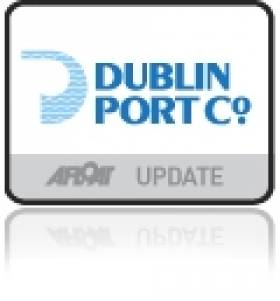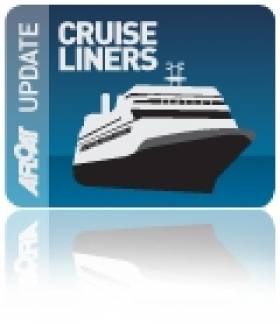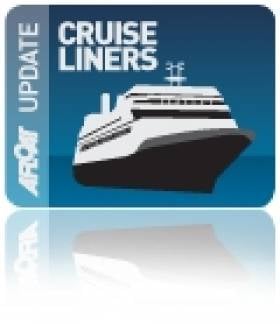Displaying items by tag: Le Boreal
Cruiseship Berths to be Much Closer up the Liffey
#DublinPort –Visiting cruise ships such as today's arrival of Le Boreal to Dublin Port are to be brought much further up the Liffey in a new plan to develop deep water berths.
Part of the river at Dublin Port is to be dredged to create a 12m deep channel for some of the world's biggest liners, up to 340m long, to dock beside the East Link toll bridge.
The development will be promoted with at least a quarter of the 100 cruise ships coming into Dublin this year using the berths. It will also ensure that tides will not stop the bigger ships getting closer to the city centre.
Dublin Port Company has begun a pre-planning consultation process and a planning application for the work to take place is expected to be submitted in September. The development intends to create room for two new cruise berths next to the toll bridge.
For more on this story, The Irish Times reports.
Mega-Yacht Cruiseship Returns
#MEGA-YACHTCRUISESHIP – Nearly a year ago to her Irish debut the Le Boréal a mega-yacht cruiseship called to Dublin Port today, writes Jehan Ashmore.
The sleek sweeping lines of the 132 berth and 264 maximum capacity vessel is designed with French flair by Jean-Philippe Nuel and built with Italian expertise by Fincantieri. She is scheduled to depart from the capital tonight. For more information and photographs of the ship, click HERE.
When she entered service for Compagnie du Ponant, the only French cruiseship operator won for the Best New Ship of the Year 2010. The prize was rewarded by the European Cruiser Association for more visit www.eucras.com
Mega-Yacht Cruiseship Le Boréal Visits Dublin
At 142m long she was built by the Italian Fincantieri shipyard and can take 264 guests in 132 luxury cabins and in public spaces the interior has a distinctly French flair from the hand of designer Jean-Philippe Nuel. She is flagged in the Wallis Futuna Islands in the Polynesian French island territory in the South Pacific.
The vessel has a cruising speed of 16 knots and a crew of 139 look after her guests throughout six decks. On the top deck named Le Paris Deck an open-air bar is located aft and forward is a sun deck area. Below on Le France Deck there is a swimming pool, grill restaurant, internet station, library panoramic lounge and an adjoining open-decked forward facing terrace sited above the bridge.
On the Le Normandie DecK there is a fitness beauty corner, a massage, hair salon, leisure area and an image & photo desk in partnership with Philippe Plisson, synonymous for his dramatic scenes of Breton lighthouses. The photographer is based in La Trinité sur Mer for more click here.
The next deck is the Le Lafayette Deck which is predominately occupied by 35 Prestige staterooms each featuring private balconies and located aft is the theatre. Going down another deck is the Le Champollian Deck where there is the main lounge, shop, reception desk, excursion desk and a medical center. Finally we reach Le Liberté Deck where guests can dine at the gastronomic restaurant, the Marina.
Twenty three years ago Compagnie du Ponant was founded by her owners the CMA CGM Group, the world's third largest container shipping group. The cruise company is an integral part of French maritime heritage and owes its origins to the renowned Compagnie Générale Transatlantique French Line.
French Mega-Yacht Cruiseship Bound for Dublin Debut
Le Boréal was to make her maiden Irish call to Cobh but the capital which was also scheduled for the 10 May will instead take this honour from the one-year old ship which is operated by France's only cruise operator, Compagnie du Ponant.
The 142m long ship was built by the Italian Fincantieri shipyard won the 'Best New ship of the Year 2010' by the European Cruiser Association. She can take 264 guests in an interior which has a distinctly French flair from the hand of designer Jean-Philippe Nuel. A crew of 139 look after the running of the six-decked vessel which has 132 luxurious appointed cabins.
Late last month Le Boréal was joined by her new sister L'Austral which was inaugurated into service during a fireworks display off the company's headquarters in Marseille. Both ships made a cruise to the Frioul Islands and famous Chateau d'If and later that day their Le Levant also took part in the celebrations when the trio returned off Marseille.
The other two vessels of the five-strong fleet are the Le Ponant, a three-masted 88m sailing ship and Le Diamant (also due Dublin and Cork this season) form a fleet of bijou cruiseships which are small in size and as such can access remote and exclusive ports of call.
Compagnie du Ponant was established in 1988 and is owned by the CMA CGM Group, the world's third largest container shipping group. The company is an integral part of French maritime heritage with origins from the renowned Compagnie Générale Transatlantique French Line.



























































